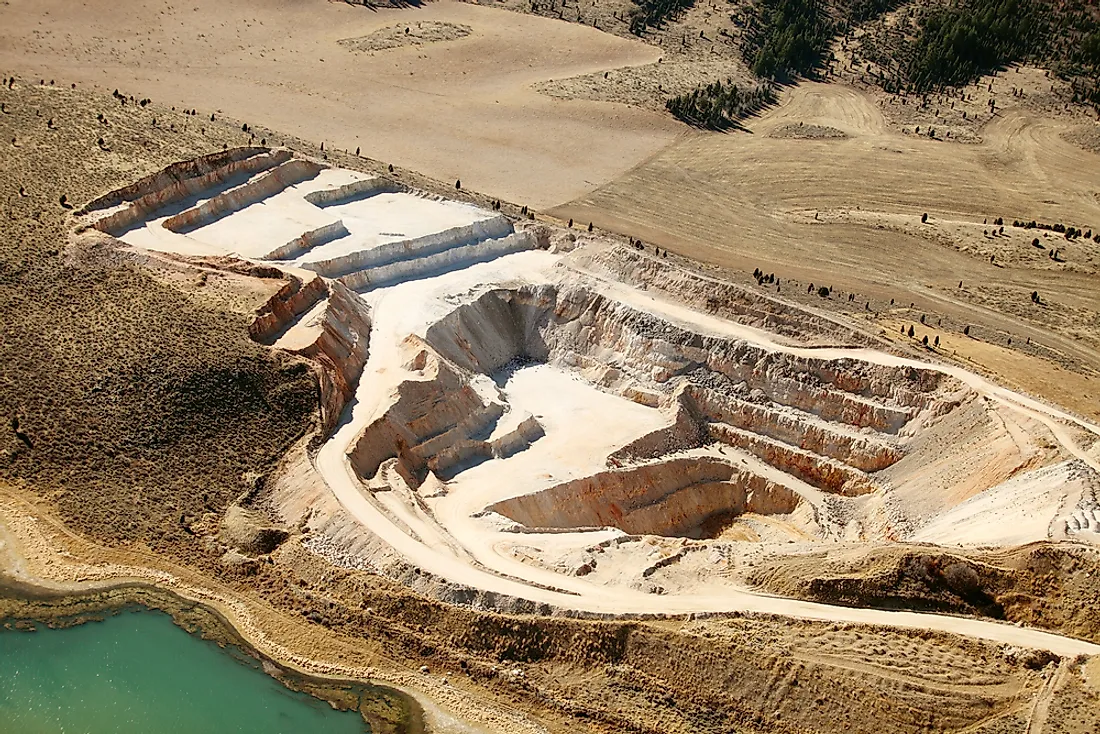Countries With the Largest Phosphate Reserves

Phosphate rocks are found across the world both in sedimentary and ingenious deposits. Phosphate is used to produce fertilizer that is essential in replacing the phosphorous that is removed by plants from the soil. Phosphate rocks are mainly mined by split technology. However, a significant amount of deposits in countries such as China and Russia are extracted by underground mining. In 2017, the US Geological Survey estimated that the phosphate reserves around the world amounted to approximately 68 billion metric tons. In 2010, the International Fertilizer Development Center estimated that the global phosphate reserve will last for several hundred years if there is zero growth in reserves. But which countries have the largest phosphate reserves in the world?
Largest Phosphate Reserves
Most of the world’s phosphate reserves are in Morocco, with the country accounting for approximately 70% of the total reserves or 50 billion tons. It is also the second-largest producer with most of the production coming from Bou Craa mine in Western Sahara. Morocco remains the largest exporter of phosphate. However, the high cost of mining and threats of war has derailed the production of phosphate in the country. Chin is a distant second with 5% of the total reserves, translating to approximately 3.1 billion tons. However, China remains the largest producer of phosphate at 138 million metric tons. If China maintains the current production rate, its phosphate reserve will be exhausted in the next 35 years.
Syria and Algeria have the third largest phosphate reserves in the world. Both countries account for 3% of the world’s phosphate reserves each, translating to approximately 1.8 and 2.2 billion metric tons respectively. Since 2010, Syria has been expanding it phosphate reserves but the civil unrest in the country has greatly affected the level of production.
Russia, South Africa, the US, Egypt, and Jordan each account for 2% of the world’s phosphate reserves. The largest supplier of phosphate raw material in Russia is the OJSC Apatit. South Africa is the second-largest producer of phosphate in Africa, boasting of about 1.5 billion tons. Although the US reserve accounts for only 2% of world’s reserve, it remains the third-largest producer of phosphate in the world. There are about 10 active phosphate mines in the US spread across the states of Florida, Idaho, North Carolina, and Utah totaling about 1.1 billion metric tons. Peru, Saudi Arabia, Senegal, Australia, and Iraq each account for 1% of the phosphate reserves in the world. The other phosphate producers in the around the world account for less than 1% of the total reserves each.
Is the World Running Out of Phosphate?
With the current rate of phosphate rock exploration and production, the reserves are likely to be depleted in the next 260 years if no new reserves are added. Consumption is likely to go up leading to a higher demand. Several steps have been put in place to reduce the over-reliance on phosphorus. Some of the programs include promotion of smarter fertilizer use and exploration of new mining areas. Although phosphorus is non-renewable, it can be recycled and reintroduced to the environment as a means of preserving the existing reserves.
Countries With the Largest Phosphate Reserves
| Rank | Country | Phosphate Reserves (% of World's Total) |
|---|---|---|
| 1 | Morocco | 70 |
| 2 | China | 5 |
| 3 | Syria | 3 |
| 4 | Algeria | 3 |
| 5 | Russia | 2 |
| 6 | South Africa | 2 |
| 7 | United States | 2 |
| 8 | Egypt | 2 |
| 9 | Jordan | 2 |
| 10 | Peru | 1 |
| 11 | Saudi Arabia | 1 |
| 12 | Senegal | 1 |
| 13 | Other Countries | 1 |
| 14 | Australia | 1 |
| 15 | Iraq | 1 |
| 16 | Vietnam | <1 |
| 17 | Tunisia | <1 |
| 18 | Brazil | <1 |
| 19 | India | <1 |
| 20 | Israel | <1 |
| 21 | Kazakhstan | <1 |
| 22 | Mexico | <1 |











